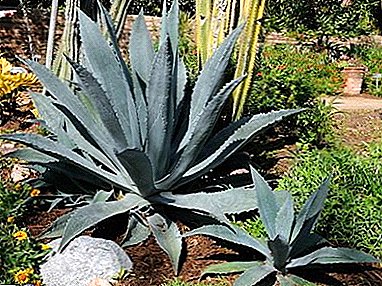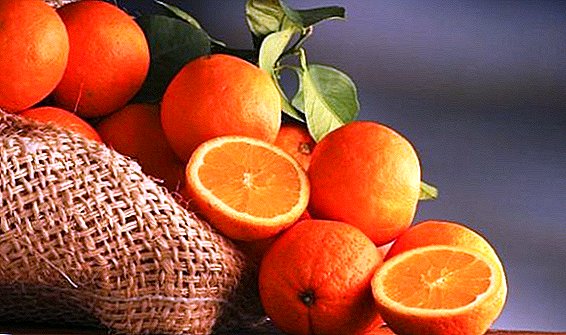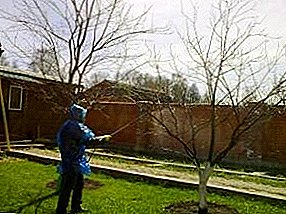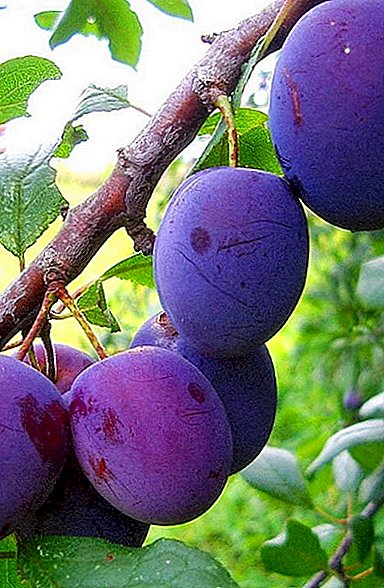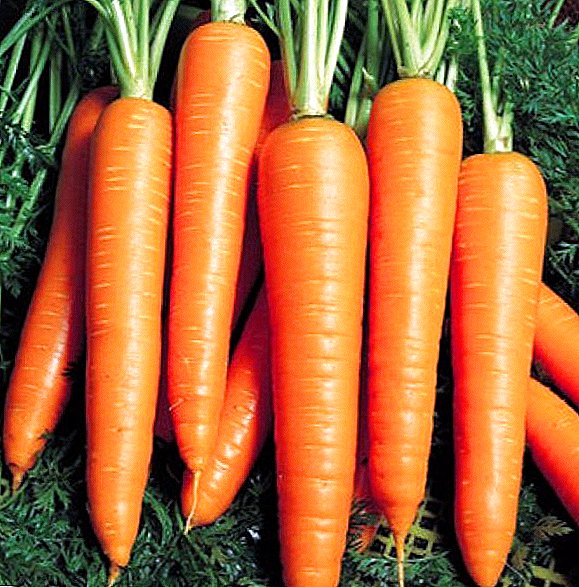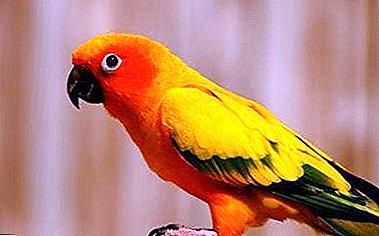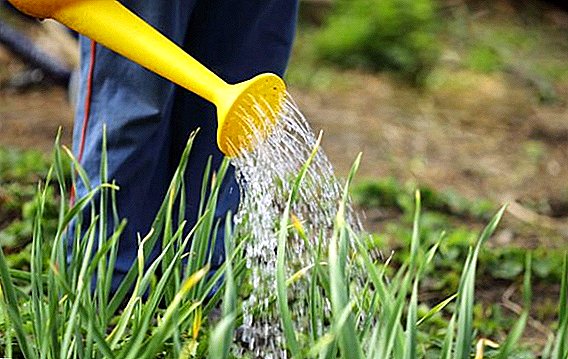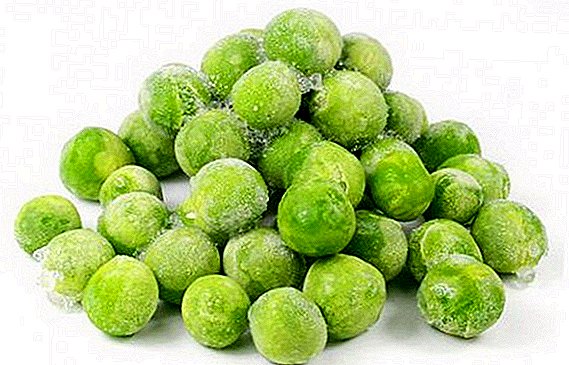
Pear can rightly be considered the "queen" of our gardens, as it is available in almost every household plot. For children, she is familiar with her favorite since childhood candy-caramel - duchess. This name comes from the name of the sweetest and tasty varieties of pear.
Fruit "queen" does not cause allergic reactions in the human body, which makes it harmless to people sensitive to certain foods. Her vitamins and trace elements support and give a daily dose of nutrients.
Below we talk about the varieties that are best grown in the suburbs. After all, the natural relief and climatic zone make adjustments to the activities of gardeners. For a start, it is worthwhile to consider a brief biological certificate about the pear.
Botanical mini-feature

The genus of pear belongs to the family of pink flowers. The name of the family comes from the characteristic color of the flowers of the tree, which it covers in April and May. The Latin name comes from two words: tree (pirus) and fruit (piru).
The flowers of the tree are bisexual. What does it mean? In bisexual flowers, the structure contains both a pistil and a stamen, which allows them to be pollinated by insects as well as self-pollinated. It also allows the use of pears as a pollinator for other types of fruit trees.
Pear can be called a real long-liver of the earth, since, under favorable conditions, it can live up to 300 years. In terms of conditions, the "queen of the garden" is quite unpretentious, drought-resistant, salt-tolerant, however, does not like when moisture stagnates in the soil.

Adult plant reaches 25-30 meters in height, has a pyramidal crown, and the diameter of the trunk can reach from 30 to 80 cm. The roots are located at a level of 1-2 meters, but most of all they develop in width, so when planting other trees near such a factor should be taken into account.
It has several forms of leaves, depending on the variety: whole, not hairy and ovate. The great advantage of a pear over other fruit trees is its productivity. She is bears fruit annually, unlike the apple tree, which can not bear fruit every year.
To increase the yield of pears is necessary plant several varieties nearbyfor cross-pollination to occur. In this case, the fruit will be more resistant to fungal infections. Over 200 varieties of pears have been bred, but below we will describe only those that are best grown in the Moscow region.
In general, pear varieties can be divided into several groups: summer, autumn and winter. Their separation goes according to the time of ripening.
The earliest varieties are summer ones. The fruits begin to ripen closer to August, but they are extremely poorly stored, so it is better to use them immediately after harvest. Among the most popular summer varieties of pears in the Moscow region are most often grown: Lada, Vidnaya, Chizhovskaya, Tenderness and Cathedral.
Now we describe the main characteristics of these summer varieties.
Descriptions of summer varieties
Variety of pears "Lada"

It is one of the earliest summer varieties, which tolerates winter very well and is resistant to drought, as well as to the defeat of fungal infection. The tree is medium with a crown pyramidal shape.
Fruits reach 100-150 gr. weights have a yellowish color with a blurry reddish blush. The sweet and sour taste is wonderfully combined with the harsh pulp structure, which is rich in fructose and P-active substances. Pear begins to bear fruit for 3-4 years after planting. It gives a stable harvest every year and is resistant to scab damage.
About pear "visible"

Late summer varietywhose fruits ripen closer to the beginning of September. It is also winter-resistant and is highly resistant to fungal infections. The fruits have a greenish-yellowish tint, and when fully ripen - orange stains appear.
The surface of the pear is rough and rough, whence its other name, the bumpy one, comes from. The tree begins to bear fruit around the fifth year, but you should note that the fruits do not ripen at the same time. Therefore, the harvest is best to shoot in several stages.
It is safer to keep ripe pears in a tree, since they practically do not crumble. If you collected them, it is better to recycle them immediately, as they are poorly transported.
Pear varieties "Chizhovskaya"

It is also one of the late summer varieties characterized by resistance to severe frosts and some diseases. The tree is low, up to 3 meters in height, with a spreading crown. It begins to bear fruit after 3 years and gives a very large harvest.
The fruits have a greenish-yellow color, however, it has a pink shade more than 50% of the surface. Sweet and sour taste combined with yellowish-white pulp, which has a loose structure. This variety is self-fertile, so for the royal harvest it is necessary to plant other pear varieties with it, for example, Lada.
Variety of pears "Tenderness"

Remarkable variety, the fruits of which for a long time can be stored at zero temperature. He bred by crossing two other varieties: Theme and Favorite Clapp.
The tree is tall enough fruit On him I ripen closer to September. When harvesting, pears have a greenish color with a bright red color somewhere on the third of the surface of the fruit.
It is also worth noting that, despite the early period of fruiting, for 3-4 year fruits are quite large, up to 200 grams, and sweet-sour to taste. Yield "Tenderness" is very high and it is resistant to low temperatures, which allows it to withstand our winters.
Description of the variety "Cathedral"

One of the most popular sredneletennyh varieties for cultivation in the suburbs. Him medium-sized fruits weighing up to 100 grams, ripen in early August, and are characterized by a greenish-yellowish color with a slightly oily surface. The same oiliness is inherent in the flesh of the pear, which has a wonderful sour taste with sweet notes.
The benefits of this variety are that frost resistant, it ripens quickly, is stored well, produces a crop annually and can be transported over long distances. Resistance to fungal infections makes it very convenient for growing in home gardens.
We should not forget about the autumn and winter varieties in the climate zone that we are interested in.
Among the autumn varieties that are profitable to grow on the territory of the Moscow region, we can distinguish 3 main ones: Muscovite, Favorite Yakovlev and Fairy Tale.
The great advantage of autumn pear varieties is that fruits can be stored longer and they ripen in the middle and second half of September. If pears are put in straw or paper, they will lie in a cool place for more than a month.
It is also interesting to read about the most popular varieties of pears.
Descriptions of autumn varieties
Variety pears "Muscovite"

This is an early autumn variety, which well keptIt is transported and not showered from the tree with a large crop. The tree itself is small, but with powerful skeletal branches.
Fruits have a light yellow tint with blotches of green, and when ripe, uneven orange spots appear. The flesh is juicy, slightly oily with a pronounced aroma. The main advantages are in fairly fast ripening of fruits and their suitability for wholesale distribution.
Grade "Favorite Yakovlev"

The variety is named in honor of the breeder PN Yakovlev, who brought it by experience on the basis of the Institute. Michurin.
Trees start bear fruit for 5-6 years and gaining momentum every year. Fruits tinged with green and yellow, on a small part of the surface there are reddish dot marks. The flesh is yellowish-cream-colored, sweet-sour in taste, with quince aroma, but without astringency.
Also in the structure of the pulp are large stony cells. Harvest period is mid-September.
About grade "Fairy"

The trees of this pear variety are quite high, which makes harvesting difficult, but they themselves fruits are very large, can reach up to 250 grams. They have a beautiful greenish color with a yellow tint, and they have a pleasant taste to use them immediately after collection, as they are stored no more than 2 weeks after removal from the tree.
Can be used to make fresh juices or mashed potatoes. The main advantages are good early fruitssuitable for commercial sale, resistance to gall mites and scab, as well as the ability to recover quickly after a small freeze.
Among winter varieties of pears, the following two varieties are most popular for harvesting: "May Day" and "Petrova".
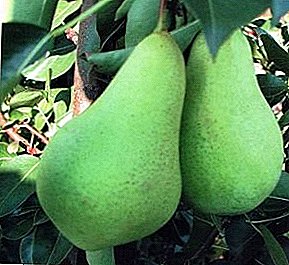
There is no need to separate their description, since they are very similar, although we will nevertheless identify some differences. Fruits of winter varieties, usually, removed in mid-October, and if properly stored, they will remain until March of the next year.
When harvesting, the fruits have a green color, but later turn yellow and then, they can be used, here our 2 varieties are different. May Day really turns yellow, and the flesh becomes cream-colored, but Petrova does not. It retains a green tint and very tough flesh.
In general, in the Moscow region, winter pear varieties were not widely spread, since climatic shifts led to a change in the temperature regime of the zone. Fruits simply do not have time to ripen before harvest, and begin to freeze. We covered the main varieties that are best grown in the suburbs - now we need to summarize the conditions for cultivation.
Now about growing conditions

The area near Moscow is in the middle lane, which means that there is a cold winter and a hot summer, and between them there are transitional periods: spring and autumn. There is also a sufficient amount of precipitation, which minimizes additional watering.
The most important point in the process of growing pears is planting, especially the correctness of the choice of place and time. Thermophilic plant, but, depending on the variety, it is very resistant to frost and very susceptible to changing location in the garden, so choosing the right place and attentiveness during planting guarantee a high and permanent crop.
Saplings can be planted both in spring and autumn, but, wise by gardening experience, it is still advised to plant young trees in the autumn. For this, a period of time is selected when the leaves have already crumbled from the trees, but it is still far from frost, that is, the vegetation period of the plant comes to an end.
For planting seedlings usually choose 1-2-year-olds, paying close attention to the condition of the roots.
The branches of a healthy, viable seedling will be prickly and tenacious, which will not allow them to suffer much in windy weather. During the autumn planting, the tree has time to take root a little at the new place before the frosts and in the spring it already begins to dissolve the buds, which may not happen immediately during the spring planting.
Also, during spring planting, there is a high risk that frost can destroy a tree, since it did not have time to take root and get used to the environment. Do not forget about choosing the right place for planting a future tree. Pear is quite a thermophilic plant, therefore should pay attention to the southern and south-western sides of their site.
Next comes the landing. Prepare a hole in advance to land settled. Since we will be planting in the fall, everything must be prepared at least a week before planting. The dimensions of the pit should be at least 60 * 60 * 60 cm. When digging, the upper fertile layer of the earth is deposited in one direction, and the lower, less fertile - in the other.
At the bottom, the earth is carefully loosened and poured in a heap a layer of fertile land, mixed with rotted manure, phosphorus-potassium fertilizer and wood ash. Pay special attention to manure - it should not be fresh. During decomposition, harmful gases are emitted which may cause the seedling that is not strong enough to dry out.
Then we fall asleep the sapling with the remaining earth and compact well so that the earth fills the empty space between the roots. Around the trunk of the tree make an earthen rollerThus, we form a hole for watering.
Water 2-3 buckets of water, and the surface is mulched. To do this, you can use straw, hay, leaves or sawdust. Such a simple technique will not only protect the plant from sudden changes in temperature, but will not allow weeds to roam.


